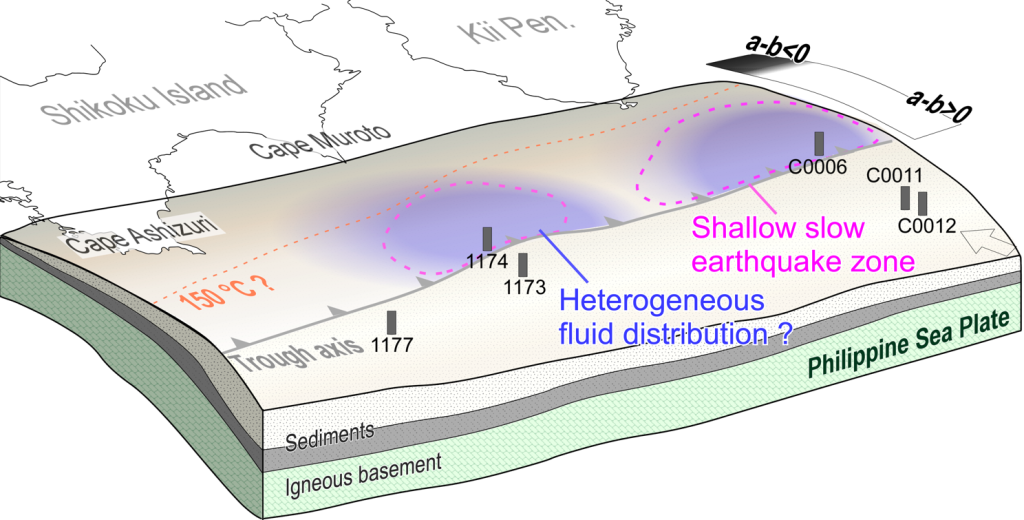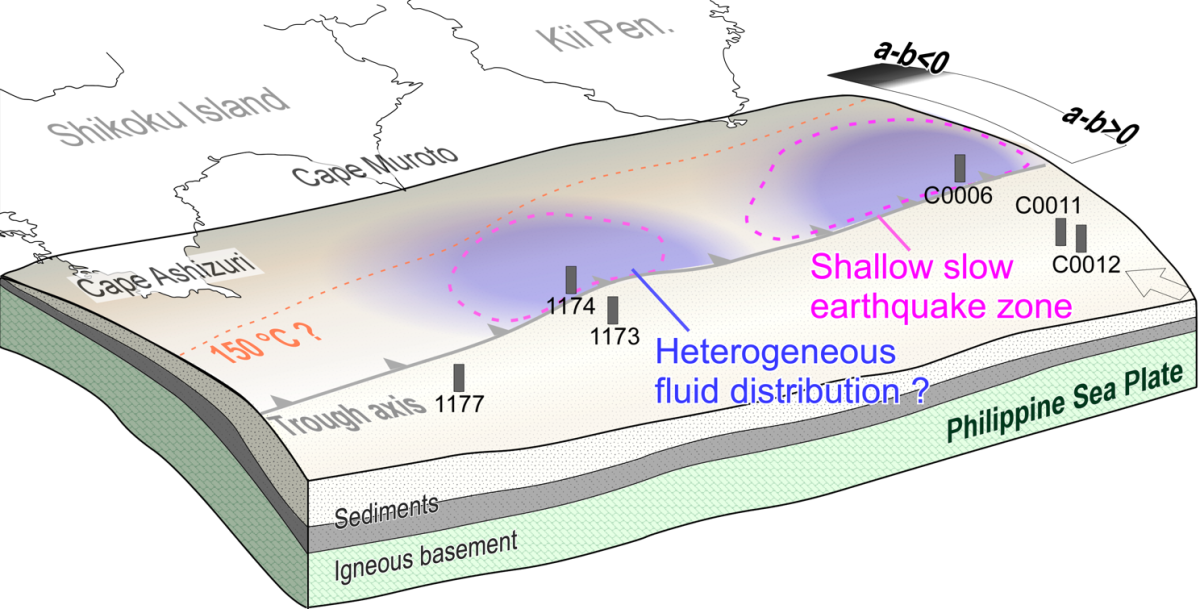Takemura, S.1, Hamada, Y.2, Okuda, H.2, Okada, Y.3, Okubo, K.4, Akuhara, T.1, Noda, A.5, Tonegawa, T.2 (2023) Earth, Planets and Space, 75, 164, https://doi.org/10.1186/s40623-023-01920-6
(1. ERI, UTokyo, 2. JAMSTEC, 3. Kyoto Univ., 4. NIED, 5. MRI)
Slow earthquakes occur at deep and shallow plate boundaries along the Nankai Trough. Deep slow earthquakes are continuously distributed along the 30–40 km depth contours of the upper surface of the subducted Philippine Sea Plate. In contrast, shallow slow earthquakes occur in limited regions: Hyuga-nada, off Cape Muroto, and southeast off the Kii Peninsula. This review provides an overview of the up-to-date seismological, geodetic, geological, and experimental results in the shallow Nankai area for a unified understanding of the spot-like occurrence of shallow slow earthquakes. Shallow slow earthquakes tend to be distributed in transitional regions between the frictionally locked and stably sliding zones on the plate boundary. Based on geological and experimental studies, the lithology of incoming sediments and their friction coefficients can be variable along the Nankai Trough. Laboratory friction experiments revealed that sediments under shallow plate boundary conditions often exhibit positive (a−b) values, while negative (a−b) is possible via several processes. Subducted seamounts create complex fracture networks and stress shadows in their surrounding areas; however, not all subducted seamounts are related to shallow slow earthquake activities. This incomplete correlation suggests that alternative factors are required to explain the spot-like distribution of shallow slow earthquakes in the Nankai subduction zone. High pore fluid pressure conditions around shallow slow earthquake zones were interpreted based on seismological structural studies. In addition, ambient noise monitoring revealed temporal changes in seismic velocity structures associated with shallow slow earthquake migrations. This result suggests a close link between pore fluid migration and shallow slow earthquake episodes. Because transient changes in pore fluid pressure can lead to various slip behaviors, the episodic migration of pore fluid around the plate boundary could promote shallow slow earthquake activity along the Nankai Trough.



